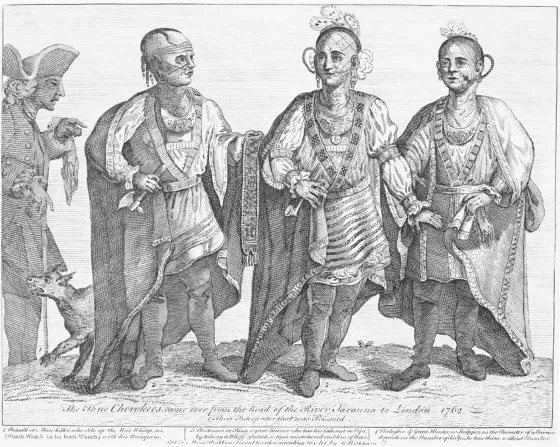
Though often remembered as a frontier colonial war, the French and Indian War was in fact just one theater in a larger global war known as the Seven Years’ War. The French and Indian War represented a clash of empires, people, and cultures, as international interests clashed over the future of the continent of North America.
The entire global conflict erupted over a power struggle in the Ohio Valley between the British, the French, and the Native Americans. Throughout the 16th and 17th centuries, Spanish, Dutch, British, and French pioneers explored and colonized different parts of North America. The Spanish settled in the Southern and Western parts of the continent, the French in the Northern parts, the Dutch in the Northeast part, and the British on the eastern seaboard. As European explorers encountered American Indians on the continent, conflict often arose. The Europeans and Indians went through numerous periods of peace and warfare. As the various European colonists moved into different areas of the continent, it often brought them into conflict with each other. While the nations fought wars on the European continent, similar warfare broke out in the various colonies as they each struggled for supremacy of the North American continent.

Contention increased in the Ohio Valley. British colonists from Virginia, Maryland, and Pennsylvania saw themselves competing with French colonists coming down from Canada. Caught in the middle, American Indian tribes began to take sides with those who they often viewed as less threatening to their way of life. As tensions between the British and French escalated in the 1750s, both sides began to build forts in the Ohio Valley and prepare for war. Then on May 28, 1754, a young British American colonist, George Washington, fired the first shot of the French and Indian War at the Battle of Jumonville Glen. This battle ignited an all-out war in the frontier that eventually spread back to Europe and around the world.
France—one major European empire engaged in the war—wanted to extend its claims and influence in the Ohio Valley to expand their fur trade, increase their wealth, and build their power influence in Canada. At the beginning of the French and Indian War, the only French troops in American were Marines, well respected units that fought through the war and supported the French colonial militia. By 1754, regular French Army soldiers arrived from France to fight the war in America.
Great Britain—the other major, competing empire— had many more colonists in North American than the French. The various British colonial legislatures created provincial units of soldiers to fight in the war. While these provincial units operated similarly to the British regulars, they were viewed as secondary to the British Army and their ranks viewed as less than that of the British Army. Colonel George Washington fought in a famous provincial unit: the Virginia Regiment. The condescending attitude of the British Army toward the provincials fueled resentment and eventually contributed to the American Revolution a few years later. Similar to the French, Great Britain also dispatched British regulars from the British Army to North America to fight for the continent. In addition to the provincial regiments, the British were also support by volunteer militia that joined to fight the French.
Native Americans found themselves caught between these two competing world powers. Rather than a single group of people, there were dozens of different American Indian tribes, and they viewed each other as different people with different desires in the conflict. They also had dissention among themselves and would occasionally change sides depending who was winning the war.
Most of the Indian tribes supported France in the war. French Catholic missionaries had been converting large numbers of Indians to Catholicism since they first arrived in the New World. The French were also less interested in displacing the Indians, but rather claimed them as a protectorate. In this role, the Indian tribes could retain their autonomy while still being French territory. They frequently traded with the French and lived in relative peace.
The Algonquin-speaking people largely supported the French, including the Wabanaki Confederacy, the Mi'kmaq, the Abenakis, the Ojibwa, the Lenape, the Ottawa, and the Shawnee among many others. The Innu and Wyandot tribes also sided with the Algonquins and French. However, some Indian tribes allied with the British, including the Iroquois Confederacy (made up of the Mohawk, Oneida, Onondaga, Cayuga, Seneca, and Tuscarora people) along with some other tribes.

Though the war seesawed back and forth, the British were ultimately victorious and defeated the French. The results of this war had long lasting effects, including setting up the situation for the American Revolution. In that war, American Indian tribes would once again take different sides, and the French would ally with the British colonists who successfully won their independence from Great Britain.





